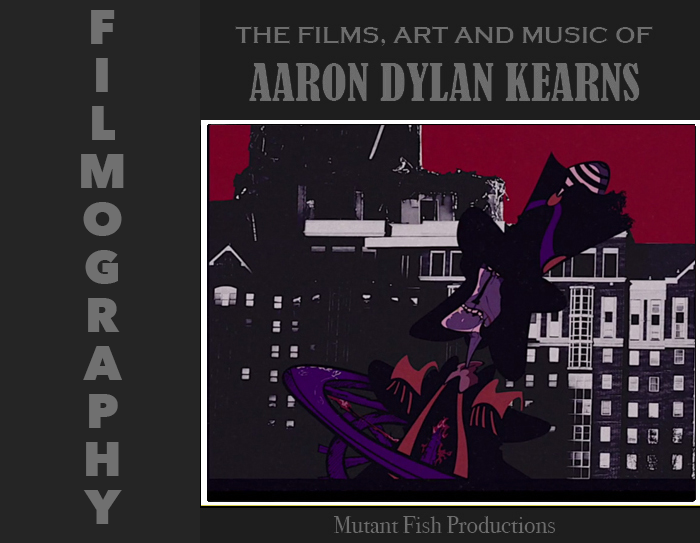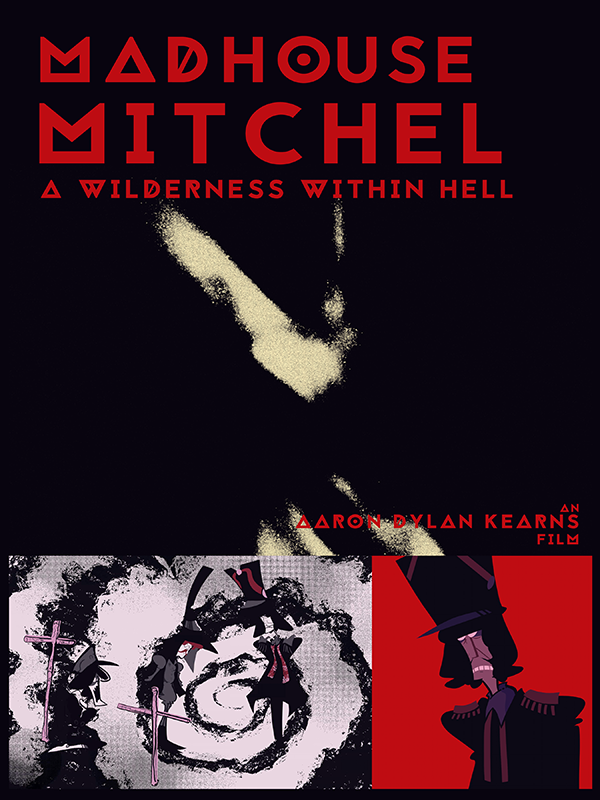Director, all art, animation, music and sound design: Aaron Dylan Kearns
Genre: Animation, surrealist horror
Runtime: 14:39 uncut version; 12:35 preview cut
Budget: $150 (IMDB wanted a budget and I approximated this much for supplies)
Release Date: August 28, 2017. The preview cut released April 20, 2017.
Madhouse Mitchel is what I have considered my second major short film, which I began work on when I was the equivalent of a junior in high school, in 2015, immediately following the making of The Counting Man. At least I began work on the art for Madhouse Mitchel then, but was working on the concept even earlier. . My plans were ambitious, and due the number of detailed drawings required, the film would end up taking over two years to make, consuming much of my creative energy for that period. Because of the time involved, and my ideas on the art work maturing over that time, I had done quite a bit before I revised my approach on May 28, 2016, working in a slightly different style than I had originally. This is only natural considering the length of time involved and that I had aged from 16 to 18, and points to the problems that can be anticipated when a young teen takes on that kind of project. But I had my vision and was not to be dissuaded.
In total, I made 1111 drawings and ended up cutting 2 different soundtracks for the first and then the second versions.
Most of the 1111 drawings for the animation were first hand-sketched. I would scan them into the computer and then color them in digitally. Some were instead photographs that I stylized to suit the animation's style, and colored digitally. I had Toonboom Studio 7.1 at my disposal, but I preferred the look of the hand drawings that were then digitally colored, and were pieced together in an animation style in Photoshop and Final Cut Pro. Toonboom is instead vector drawing, and I felt it neu
When I began production, I viewed Madhouse Mitchel as a sort of small scale rebellious antidote to popular formula. The basic narrative style pays homage to my interest in Japanese avant garde cinema, and the art has hints of my early memories of the Russian animation I was attracted to as a child. It has a certain organic, traditional element which in this film clashes against the grotesque, mutated industrial scenery in which the characters reside. The way things move also makes reference both to the kamishibai storytelling art form and the earlier limited animation that would be utilized in shows like Devilman. It’s largely a comic in film form which also makes reference back to kamishibai, a form of Japanese street theater that focuses on drawn images and narration to tell a story.
The plot line for the movie came out of horror movie influences, and my wanting to do a work on the destructive forces of totalitarianism and the religious fanaticism and political religious control that led to the murders and tortures during the Spanish Inquisition. As I wanted the story to take place during a time of apocalyptic uncertainty, I also constructed associations with the medieval black plagues, in creating a sense of no specific time, no specific place, that was however reminiscent of different periods in history.
The story is an existential confrontation between self and the subconscious, or mortality and deity, tied to a man who has been kept in a mental institution used for totalitarian control by a town's police chief and priest (who later die of the plague), and where tortures like those of the Spanish Inquisition take place. The tortured man comes to believe he has a demon in his brain and breaks out of the hospital. An overwhelming sense of paranoia is caused by the plague, the police state, and the priest. Eventually the man is convinced by the demon that the way to exorcise it is to drill a hole in his head. The viewer is left to decide whether the demon is a god, or the man's subconscious, and if it is his subconscious does this mean that his subconscious is, for him, deity.
The cut version that was only released for a preview, and is not to be considered any alternative version of the film:
Madhouse Mitchel from Aaron Dylan Kearns (EyeOdyssey) on Vimeo.
The trailer:
The poster:



